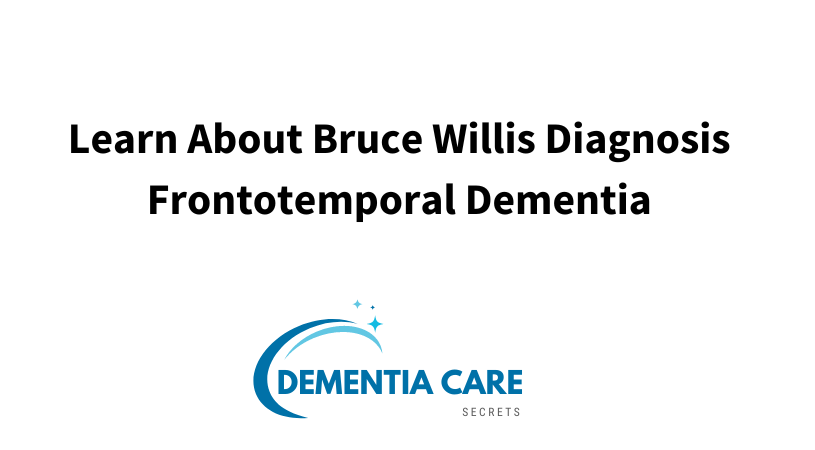Navigating Frontotemporal Dementia: A Rare Neurodegenerative Disease
Discovering answers for a possible rare form of frontotemporal lobe dementia known as Corticobasal Syndrome (CBD). Learn about its symptoms, what to expect, and where to turn for support in dealing with the progressive neurodegenerative process.

I have a husband, 57, with a possible rare neurodegenerative brain disease affecting the frontal, temporal, and parietal lobes. He experiences cognitive deficits, involuntary body movements, mood disorders, apathy, memory loss, and more.
We have been to two major hospitals and are just left with being told, "come back in 6 months and see how things are." They say his condition is so rare, yet describe it as a progressive neurodegenerative process.
After a PET scan, the doctor described it as "between Alzheimer's and Huntington's."
So what are we to expect? What should we do, and where do we turn?
-Lori

Lori,
First, let me say that I am so sorry to hear about your husband's condition. I know this must be a very difficult time for you.
It is incredibly frustrating not to have a diagnosis. Living with a spouse who is experiencing all these issues, with no one to provide the support you need, must leave you feeling helpless.
Please know that you are not alone. Unfortunately, the medical delivery system can let us down at times. However, I think I may have some answers that could help you.
I recommend contacting the Rare and Undiagnosed Disease Program and asking for assistance. Here is a link to the program for your convenience:
[Insert link here]
Additionally, I have provided you with further information that I hope will help you navigate this challenging journey.
Thank you for reaching out.
Warm Regards,
Diane Carbo RN
Caring for a loved one can be overwhelming — but you're not alone. If you have questions, big or small, our expert team is here to help.
👉 Click here to Ask the Expert
This video addresses FTD. Bruce Willis was recently diagnosed with Frontotemporal dementia. In this video I share how FTD differs from Alzheimer's disease and common symptoms of frontotemporal dementia.
More on Frontotemporal Lobe Dementia...
Overview of Neurodegenerative Diseases
Neurodegenerative diseases are a diverse group of disorders characterized by the gradual degeneration or death of nerve cells in the brain and spinal cord. These conditions affect critical areas of the brain, leading to cognitive deficits, movement disorders, and a decline in mental abilities.
In cases involving the frontal, temporal, and parietal lobes, the disease process disrupts essential functions like memory, behavior, and language. These brain disorders are often progressive, meaning symptoms worsen over time. Understanding the specific areas affected—like the frontal lobes, responsible for decision-making and behavior, or the temporal lobes, which play a role in memory and language—is essential for effective management.
Common neurodegenerative diseases include:
- Alzheimer's disease, primarily affecting memory.
- Parkinson disease, linked to motor function and movement.
- Amyotrophic lateral sclerosis (ALS), which leads to muscle weakness and motor neuron disease.
- Frontotemporal dementia (FTD), which targets behavior and language.
With no definitive cure for most of these conditions, early detection through brain scans, genetic testing, and other diagnostic tools is crucial. Treatments often focus on managing symptoms, slowing disease progression, and improving quality of life through therapies like physical and occupational therapy.
What is Frontotemporal Dementia (FTD)?
Frontotemporal dementia (FTD) is a group of neurodegenerative disorders caused by frontotemporal lobar degeneration, a condition marked by the loss of brain cells in the frontal and temporal lobes. These regions are crucial for regulating behavior, personality, and communication, making FTD distinct from other forms of dementia, such as Alzheimer's disease.
Subtypes of FTD
FTD is often divided into specific subtypes based on the predominant symptoms:
- Behavioral Variant Frontotemporal Dementia (bvFTD): This is the most common form, characterized by significant changes in personality, social behavior, and judgment. People may exhibit compulsive behaviors, engage in risky behaviors, or show apathy.
- Primary Progressive Aphasia (PPA): This subtype primarily affects language skills. Patients may struggle with speaking, understanding language, or naming objects.
- Movement Disorders: FTD may also be associated with progressive supranuclear palsy or corticobasal syndrome, which affect motor skills and coordination.
How Frontotemporal Dementia Affects the Brain
In FTD, the frontal and temporal lobes undergo shrinkage due to abnormal protein deposits in the brain, leading to cell death. These proteins disrupt the function of nerve cells, impairing communication between different brain regions. Over time, as brain tissue degenerates, symptoms worsen, affecting a person's ability to function independently.
Symptoms of Frontotemporal Dementia
FTD symptoms often vary based on the affected brain regions:
- Behavioral Symptoms: Poor judgment, lack of empathy, and reduced self-awareness.
- Language Impairments: Difficulty in speech production and comprehension (semantic dementia or semantic variant).
- Motor Symptoms: Issues like muscle stiffness, tremors, and coordination problems, particularly in cases linked to motor neuron disease.
Early Signs and Progression
Early signs of FTD may be subtle, such as forgetting appointments or neglecting personal hygiene. As the disease progresses, FTD symptoms can include:
- Loss of language abilities.
- Increased difficulty swallowing in later stages.
- Challenges with mobility due to muscle weakness.
How FTD Differs from Alzheimer’s Disease
While Alzheimer’s disease primarily impacts memory in older adults, FTD often appears at a younger age, typically between 45 and 65, and affects behavior and language first. For this reason, FTD is sometimes misdiagnosed as a psychiatric condition or frontal lobe dementia.
Diagnosing FTD
Accurate diagnosis of FTD relies on a combination of:
- Magnetic resonance imaging (MRI) to identify brain shrinkage.
- Neuropsychological testing to assess mental abilities.
- A thorough review of medical history and possible family history of FTD.
- Genetic testing, particularly when a hereditary form of FTD is suspected.
Managing Frontotemporal Dementia
Though there is no cure for FTD, several strategies can improve quality of life:
- Speech Therapy: Helps patients retain language abilities.
- Physical Therapy: Addresses muscle stiffness and maintains mobility.
- Occupational Therapy: Supports daily activities and reduces stress on caregivers.
- Psychiatric Treatment: Manages psychiatric symptoms, such as depression or anxiety.
Impact on Family Members
The progression of FTD places a significant emotional and financial burden on family members. Resources such as support groups, counseling, and social security disability benefits can provide relief.
By understanding frontotemporal degeneration, families can make informed decisions and create a care plan that addresses the challenges posed by this devastating disease.

How the Disease Progresses
Frontotemporal Dementia (FTD) is a progressive neurodegenerative process, meaning that its symptoms worsen over time as brain tissue continues to deteriorate. The progression of FTD varies depending on the subtype and the individual's overall health, but the course of the disease typically follows these stages:
Early Stages
- Noticeable Symptoms: Subtle changes in behavior or mental abilities may be the first signs. These can include difficulty with tasks such as managing finances, planning daily activities, or keeping appointments.
- Behavioral Symptoms: Compulsive behaviors like repetitive actions or hoarding may emerge. Others might show risky behaviors, such as reckless spending or inappropriate social interactions.
- Language Difficulties: For individuals with primary progressive aphasia, early signs might involve trouble finding words or following conversations.
Middle Stages
- Increased Dependence: As the disease progresses, individuals require help with daily activities such as cooking, cleaning, and managing medications.
- Motor Symptoms: In cases where FTD is linked to motor neuron disease, muscle weakness and difficulty swallowing may begin to appear.
- Compromised Social Behavior: Patients may exhibit extreme apathy, lose empathy, or struggle with maintaining relationships, further isolating them from family members.
Later Stages
- Severe Physical Impairments: Progressive motor symptoms such as muscle stiffness and impaired mobility become prominent.
- Communication Breakdown: For those with semantic dementia or language impairments, speech may decline to the point where communication becomes nearly impossible.
- Neurological Disorders: Advanced stages may include symptoms resembling parkinson disease or progressive supranuclear palsy.
- End-Stage FTD: Patients often require round-the-clock care due to severe memory loss, inability to perform basic functions, and significant behavioral challenges.
Behavioral Symptoms
Behavioral Variant Frontotemporal Dementia (bvFTD) is characterized by significant changes in behavior and personality. These symptoms can strain relationships with family members and caregivers.

Common Behavioral Symptoms
- Compulsive Behaviors: Patients might develop repetitive habits, such as clapping, tapping, or rigid routines that they insist on following.
- Risky Behaviors: Reckless decision-making, such as overspending, gambling, or inappropriate social conduct, can lead to financial or legal difficulties.
- Extreme Apathy: A hallmark of FTD, apathy can lead to a lack of interest in previously enjoyed activities, family interactions, or personal hygiene.
- Loss of Empathy: Patients may seem indifferent to the emotions or needs of others, causing significant challenges in family dynamics.
Psychiatric Symptoms
FTD may also present with psychiatric symptoms like depression, anxiety, or irritability. Misdiagnosis as a mood disorder or psychiatric condition is common in the early stages, delaying proper treatment.
Early Stages of FTD
The early stages of FTD can be difficult to recognize, as symptoms often mimic other conditions or are attributed to stress, aging, or personality changes. However, identifying these early warning signs is crucial for timely diagnosis and intervention.
Common Early Symptoms
- Difficulty Managing Finances: A previously organized individual may start making mistakes with bills, taxes, or budgets.
- Memory Loss: Though less prominent than in Alzheimer's disease, subtle lapses in memory can occur.
- Social and Behavioral Changes: Patients may behave inappropriately in social settings or struggle to read social cues.
- Language Skills Decline: Early signs of language impairments include trouble naming objects, forgetting words, or difficulty following conversations.
Impact on Family and Work
In the early stages, individuals may face challenges maintaining their professional roles or fulfilling responsibilities at home. Families might notice changes in behavior but struggle to attribute them to a neurological condition.
How to Manage the Progression
Therapies to Slow Decline
While there is no cure for FTD, certain therapies can help manage symptoms and improve quality of life:
- Speech Therapy: Supports individuals with language difficulties.
- Physical and Occupational Therapy: Addresses muscle weakness and helps patients retain mobility and independence.
- Psychiatric Support: Treats associated symptoms like depression and anxiety.
Monitoring the Disease Progression
- Brain Scans: Tools like magnetic resonance imaging (MRI) can track brain shrinkage and other structural changes.
- Neuropsychological Testing: Regular assessments of mental abilities help evaluate the extent of cognitive decline.
Support for Family Members
- Counseling and Support Groups: Emotional and practical support for caregivers.
- Social Security Disability Benefits: These can provide financial relief as the disease progresses.
By understanding how frontotemporal disorders evolve, families can prepare for the challenges ahead and access the resources needed for comprehensive care.

Navigating Social Security Disability Benefits
Applying for Social Security Disability Benefits (SSDI) can provide much-needed financial relief for individuals diagnosed with neurodegenerative diseases like frontotemporal dementia (FTD), Alzheimer’s disease, or other brain disorders. These benefits can help offset the significant costs of medical care, therapies, and the loss of income when individuals are no longer able to work.
Understanding Eligibility for SSDI
To qualify for SSDI, applicants must meet strict criteria demonstrating that their condition severely impairs their ability to work. Conditions such as amyotrophic lateral sclerosis (ALS), motor neuron disease, or frontotemporal lobar degeneration are often included in qualifying neurological disorders.
Key Requirements:
- Documented Diagnosis: Evidence from specialists showing a clear diagnosis of a progressive neurodegenerative process, such as behavioral variant FTD or primary progressive aphasia.
- Medical Records: Comprehensive documentation, including brain scans like magnetic resonance imaging (MRI) or PET scans, showing changes such as brain shrinkage or abnormal protein deposits.
- Functional Limitations: Proof that the disease limits mental abilities, language skills, or physical capacity due to symptoms like muscle weakness, difficulty swallowing, or movement disorders.
Steps to Apply for SSDI
- Collect Necessary Medical Evidence:Complete the Application:Request Expedited Processing:Prepare for Appeals:
- Records of symptoms such as compulsive behaviors, risky behaviors, or memory loss.
- Results of genetic testing if a hereditary condition is suspected.
- Reports from physical and occupational therapists documenting limitations in daily activities.
- Clearly outline how the disease progresses and impacts the ability to work or perform basic tasks.
- Include detailed descriptions of how later stages of the disease will likely require full-time care.
- Conditions like Lou Gehrig’s disease (ALS) or severe FTD symptoms may qualify for the Compassionate Allowances Program, allowing for faster benefit approval.
- If initially denied, appeal with updated medical evidence and additional evaluations such as neuropsychological testing.
Benefits of SSDI for Neurodegenerative Diseases
- Financial Support: Provides monthly income to help cover medical expenses, therapy, and caregiving needs.
- Medicare Access: SSDI recipients typically gain access to Medicare after a 24-month waiting period, offering additional coverage for therapies like speech therapy or physical therapy.
- Reduced Family Burden: Eases the financial strain on family members who might otherwise shoulder the costs of care.

Supporting Caregivers
Caring for someone with frontotemporal dementia or another progressive disease is an emotional and physical challenge. The unpredictable nature of these diseases, especially with FTD symptoms such as risky behaviors, apathy, or language impairments, makes caregiving particularly taxing.
Emotional Impact of Caregiving
- Behavioral Symptoms: Caregivers often face stress from managing behavioral variant frontotemporal dementia, which may involve compulsive behaviors or a lack of empathy.
- Psychiatric Symptoms: Mood swings or psychiatric issues like depression in the patient can further strain relationships.
- Grief and Loss: Witnessing the decline of a loved one’s mental abilities or language skills often leads to anticipatory grief.
Resources for Caregivers
- Counseling Services:Respite Care:Educational Tools:
- Individual or group counseling can help caregivers process their emotions and develop coping strategies.
- Therapists with expertise in frontotemporal disorders can provide insights into managing specific challenges.
- Temporary care services allow caregivers to take a break, preventing burnout. This is especially crucial in the later stages when caregiving demands increase.
- Some organizations offer free or low-cost respite care specifically for families dealing with neurological disorders.
- Learning about symptoms of frontotemporal dementia and how to manage them can reduce stress. For example:
- Speech therapy techniques for improving communication with patients.
- Occupational therapy advice for making the home safer and more accessible.
- Online courses and resources about progressive neurodegenerative processes are widely available.
Addressing Financial Strain
- Social Security Disability Benefits: Caregivers should assist their loved ones in applying for SSDI to alleviate financial burdens.
- Caregiver Support Grants: Some organizations provide financial assistance to cover costs related to caregiving.
- Tax Deductions: Family caregivers may qualify for tax breaks for medical and care-related expenses.
Preventing Caregiver Burnout
Caregivers often experience burnout due to the physical and emotional toll of their responsibilities. Recognizing the early signs of stress, such as fatigue, irritability, or withdrawal, is critical.
Tips for Avoiding Burnout:
- Self-Care:Social Connections:Professional Support:
- Allocate time for exercise, hobbies, and rest to maintain physical and mental well-being.
- Regular sleep schedules can help mitigate the effects of sleep disturbances common in caregiving.
- Join support groups for caregivers of individuals with behavioral variant FTD or related conditions.
- Stay connected with friends and family to avoid isolation.
- Hire professional caregivers or enlist the help of family members to share responsibilities.
- Work with physical and occupational therapists to design care plans that optimize the patient’s independence.

Creating a Care Plan
Developing a comprehensive care plan is essential for managing the complex needs of someone with frontotemporal dementia (FTD) or similar neurodegenerative diseases. A well-structured plan ensures that medical, emotional, and practical needs are addressed at every stage of the illness.
Key Components of a Care Plan
- Routine Medical Visits:Therapy Sessions:Daily Routine and Activities:Contingency Plans for Later Stages:Family and Caregiver Support:
- Schedule regular appointments with neurologists and specialists experienced in frontotemporal disorders.
- Use tools like magnetic resonance imaging (MRI) and brain scans to monitor disease progression.
- Track FTD symptoms, including behavioral symptoms, language impairments, and physical changes like muscle stiffness.
- Incorporate speech therapy to maintain communication abilities for patients with primary progressive aphasia or semantic dementia.
- Utilize physical and occupational therapy to address motor neuron disease symptoms and help the patient retain independence.
- Engage in therapy for psychiatric symptoms, such as depression or anxiety, which often accompany frontotemporal lobar degeneration.
- Design routines that accommodate the patient’s changing abilities and preferences, helping to manage risky behaviors or compulsive behaviors.
- Provide cognitive stimulation through activities like puzzles, music, or art therapy.
- Plan for the challenges of later stages, such as difficulty swallowing, muscle weakness, and the need for full-time care.
- Prepare legal documents, including power of attorney and advance directives, while the patient is still capable of participating in decisions.
- Explore long-term care options, such as in-home care, assisted living, or specialized memory care facilities.
- Clearly define roles and responsibilities for family members to ensure cohesive care.
- Encourage open communication among caregivers to address challenges and share updates.
Finding Hope and Support
While no cure exists for FTD or other progressive neurodegenerative diseases, finding support and staying informed can significantly improve quality of life for both patients and caregivers.
Connecting with Specialists
- Seek out neurologists or neuropsychologists who specialize in frontotemporal degeneration or other brain disorders.
- Consult with genetic counselors to explore the role of family history and assess potential risks for other relatives.
Joining Support Groups
- Caregiver Support: Join groups focused on frontotemporal dementia (FTD) or related conditions. Sharing experiences with others facing similar challenges can provide emotional relief and practical advice.
- Patient Support: For patients still in the early stages, participation in support groups can foster a sense of community and reduce feelings of isolation.
- Access online forums and local meetups where caregivers and patients can exchange tips and resources.
Exploring Clinical Trials
- Clinical trials may offer experimental treatments or insights into managing FTD symptoms and slowing disease progression.
- Resources like ClinicalTrials.gov provide information on studies related to frontotemporal lobar degeneration, behavioral variant FTD, and other rare neurological disorders.
Staying Informed
- Educate yourself about the disease through reputable sources, such as organizations specializing in frontotemporal disorders or Alzheimer’s disease.
- Learn about emerging therapies for managing movement disorders, language skills, and behavioral symptoms.
Where to Turn Next
Contact a Specialist
- Neurologists and neuropsychologists focusing on rare neurological conditions are your best allies for accurate diagnosis and tailored treatment plans.
- Ensure you have a team of professionals that includes therapists for speech therapy, physical therapy, and occupational therapy to address specific challenges.
Join Support Groups
- Engaging with others facing similar issues provides emotional relief and actionable advice for managing daily caregiving challenges, including compulsive behaviors and psychiatric symptoms.
- Family caregivers benefit greatly from shared resources, advice, and emotional support.
Explore Clinical Trials
- Research trials investigating experimental treatments or therapies for frontotemporal dementia, pick’s disease, or other subtypes of frontotemporal lobar degeneration.
- Participating in clinical trials can contribute to broader knowledge about the disease while offering hope for future advancements.
Leverage Available Resources
- Utilize services like counseling, respite care, and financial aid programs to alleviate caregiving stress.
- Apply for social security disability benefits to ease the financial burden of caregiving and medical costs.
Finding Strength and Moving Forward
Lori, your journey is undeniably challenging, but you are not alone. Many families are navigating similar paths and finding ways to adapt, cope, and thrive despite the obstacles. By creating a solid care plan, connecting with specialists, and seeking support, you can face the complexities of this disease with resilience. With the right information and resources, you can ensure your husband receives compassionate, comprehensive care while finding balance and support for yourself and your family.
More articles on this subject..











